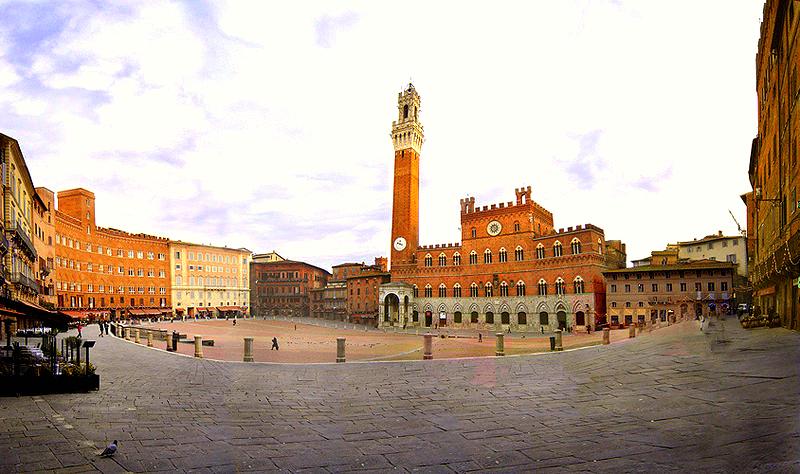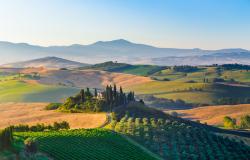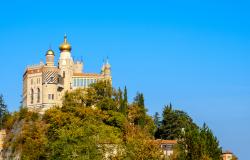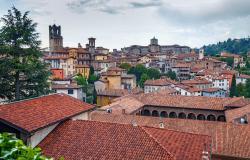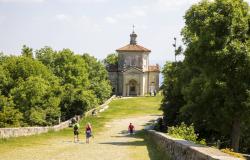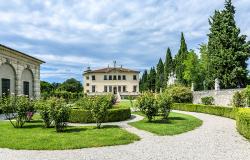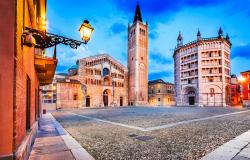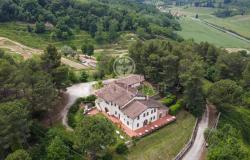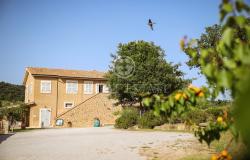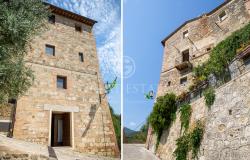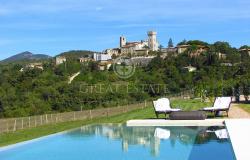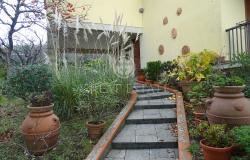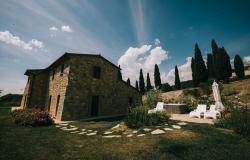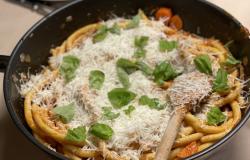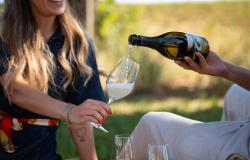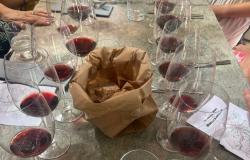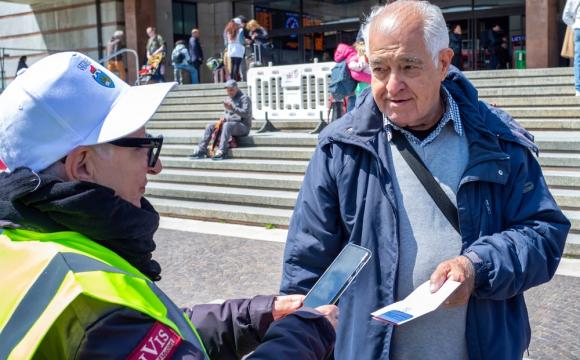‘For those involved in governing the city, the main problem is one of beauty’ once remarked an alderman of Siena, Tuscany’s finest city and the best-preserved medieval town in Europe. Siena is immediately likeable, neatly encased within its ancient city walls, and free of cars in the city centre. It is always a delight to wander through its narrow-arched streets, to explore the maze of dark, stepped alleyways, cobbled lanes and hidden fountain-splashed piazzas, and to discover its ancient palaces, its ornate balconies, its outstanding galleries and churches... no wonder Charles Dickens called it a ‘Venice without water’.
A Florence counterpart
The city has always provided an intimate antidote to its neighbour and eternal rival, Florence, just 65km to the north. Smaller, simpler, and more welcoming than Florence, its appearance is distinguished by its impressive hilltop site – built, like Rome, on seven hills and set amid what Virginia Woolf described as ‘the loveliest of all landscapes’. Its Gothic architecture provides a perfect foil to the Renaissance treasures of Florence, and the predominance of rich reddish-gold brick, rather than honey-coloured stone, gives the city a soft luminous glow as it basks in the Tuscan sunshine. More decorative but less intellectual than Florence, it is also less weighed down by history.
Historical perspective
The site of Siena was originally an Etruscan settlement that later became the Roman city of Sena Julia, founded by Senius, son of Remus (one of the two legendary founders of Rome). Hence the famous symbol of the suckling she-wolf became the civic badge, seen wherever the republic held sway. The Middle Ages saw Siena’s heyday, when it became one of Europe’s wealthiest cities, with a thriving textile industry. Much to the envy of Florence, it also boasted the first international banks in the world, raking in money from the whole of Christendom on behalf of the papacy.
During this time, Sienese painters (including Duccio di Buoninsegna, Simone Martini, Giovanni Pisano and the Lorenzetti brothers) were shaping the history of Italian and European art, with their early experimentation in techniques of perspective, their refined Gothic stylisation and their minute attention to detail. Appropriately, the city’s reddish-brown soil, rich in ferric oxide deposits, gave its name to the pigment ‘burnt Sienna’, so beloved by the great master painters. Their works can be seen today in several of the city’s galleries. The ninth-century Ospedale di Santa Maria della Scala, a hospital for 800 years, now counts among Italy’s top galleries with its huge old wards smothered in frescoes. Siena’s main gallery is the Pinacoteca Nazionale. Here, many works depict the surrounding countryside with its softly-hued hills and vineyards, apricot-and butterscotch-coloured farmhouses and neat rows of cypresses, but ‘The Adoration of the Magi’ by Bartolo di Fredi shows a particularly realistic glimpse of the city at the height of its 14th-century glory.
Sadly, the Black Death of 1348 dealt Siena a severe blow. It struggled to recover but, with three-quarters of its population dead, it was to take centuries. Meanwhile, its arch rival, Florence, flourished. Even in the 19th century, Henry James described Siena as a ‘cracking, peeling, fading, crumbling, rotting’ city. But today, confidence has returned to this elegant, old-fashioned prov-incial city, grown rich again
on banking and tourism. Its streets, squares and noble buildings resemble an open-air museum; its plentiful art treasures remain as the legacy of its once distinguished role in history.
The Duomo
Siena’s greatest treasure is probably its striking Duomo (1136-1382), considered among the masterpieces of Italian Gothic architecture. This lavish confection of black-and-white striped marble, and its matching campanile, is set majestically atop Siena’s highest hill. The citizens had hoped to make it the largest church in Christendom, intending the vast nave we see today to be simply the transept of a much greater building. A new nave to the south was planned in 1339, but the advent of the Black Death put pay to their ambitions, wiping out not only the funds but the congregation too.
To this day, the cathedral remains unfinished. The exuberant façade is a blend of pink-and-white marble with a striking and, some say, tasteless mixture of medieval statuary and 19th-century mosaic. The equally lavish interior was described by Ruskin as ‘overstriped, over-crocketed, over-gabled... a piece of faithless vanity’. Not only does it echo the two-tone marble banded-marble motif of the exterior, but it contains Italy’s finest carved pulpit depicting scenes from ‘The Life of Christ’, created by Nicola Pisano, dazzling stained-glass windows by Duccio, and an astonishing inlaid marble pavement illustrating the Advent of Christianity and other stories from the Bible.
Today, the Museo dell’Opera del Duomo is housed in the incomplete nave and contains Giovanni Pisano’s sculptures which once graced the cathedral’s façade, and a multi-panelled gold-backed altarpiece, the ‘Maestà della Madonna’ by Duccio, which was processed in triumph through the city on completion. From the graceful bell-tower, it is easy to make out the ground plan of the aborted cathedral extension.
The best bird’s-eye view over Siena, however, is from the slender Torre del Mangia, towering high above Siena’s main square – the Piazza del Campo. It was built in 1348 to mark the end of the feudal era as a symbol of the freedom of the city-state, and named after its first bell-ringer, a spendthrift renowned for his laziness, nicknamed Mangiaguadagni (literally ‘eat the profits’). At 102 metres, it was intended to surpass every existing tower in Italy. The 505-step climb to the top is richly rewarded by sweeping views over Siena’s patchwork of roofs, the striking main square and the picturesque surrounding countryside.
No matter which way you turn in the labyrinth of medieval streets and alleys, they all seem to lead to the Campo. This vast red-bricked, seashell-shaped open space is considered one of the most dazzling designs of Italian town planning. Tilted to accommodate the natural incline of the hillside, it is divided by long white marble spokes into nine segments, in honour of the ‘Council of Nine’, the city rulers of the time. Even the magnificent semicircle of elegant rose-coloured palazzi surrounding the square were constructed according to strict building regulations, to maintain the dignity of the city’s greatest square.
The most impressive palace on the square is undoubtedly the majestic Palazzo Pubblico, seat of Sienese government since the Middle Ages. Within the palace, the Museo Civico contains some of the city’s finest frescoes, notably Ambrogio Lorenzetti’s dazzling ‘Allegories of Good and Bad Government’, considered to be among the most important Medieval secular paintings in the world.
For centuries the Campo has been the hub of Sienese life: fruit, vegetables and livestock were sold here, grain was handed out to the poor, heretics were burnt, and illustrious visitors were wined and dined. Today, it is a popular meeting place ringed by tiny shops offering visitors a chance to try some of the local specialities – Sienese pecorino cheese, delicious washed down with a glass of Tuscan wine; panforte, a dark, dense cake of candied fruit, nuts, cinnamon and cloves; or ricciarelli sweets, made from ground almonds, orange peel and honey. After dark, the square takes on an almost magical atmosphere, alive with al fresco diners in the restaurants and cafés surrounding the fan-shaped square. But the Campo is probably most celebrated as the venue of Tuscany’s best-known festival - the Palio, a fiercely contested bareback horse-race between the various wards of the city, which takes place annually on 2nd July and 16th August.
The Palio
For centuries Siena has been divided into districts called contrade – a system unique to Siena. Originally, there were 40 such districts. But today, and since the 17th century, there are only 17 - each a village at heart, a sort of clan, with its own
symbols, traditions, social club, museum, church and fountain, where new-born babies are still baptised into the contrade. The citizen’s pride in their district leads to considerable rivalry, climaxing each year in the Palio. Records show the race dates back at least to 1283, but its origins are more likely to be rooted in Roman military training. The race itself lasts little more than a minute but, such is its importance
to the Sienese, preparations for it take a full year
of discussions, arguments, secret alliances and bribery, reflecting conflicts that have persisted over the centuries. It is not unknown for a contrade to ‘buy off’ rival jockeys, or for families to arrange
a temporary separation of newly-weds of rival contrade in the run-up to the Palio.
On the big day, each horse is dressed in the colours and symbols of its contrade (the Ram, the Caterpillar, the Goose, the Tortoise, the Owl, the Panther) and is blessed in the church by the local priest. All then process to the Duomo to be collectively blessed by the bishop. A pile of droppings on the church pavement is viewed as a good omen. Meantime, thousands of tourists cram into the Piazza del Campo together with excited contrade (local
supporters). The scene is thrilling, and emotions run high amidst the pageantry and flag-waving as drummers, trumpeters and mace-bearers parade in their splendid medieval costumes.
The actual race is a remarkable spectacle with riders ruthlessly shoving, pushing and buffeting each other. Three laps of the square and clouds of dust later, one of the contrade is awarded the hand-painted palio, or banner, of the Holy Virgin, and the winning steed is pronounced hero of the day. Even if his jockey falls or is dragged off by a rival, the horse remains eligible to win the race, and takes place of honour at an enormous open-air candlelit banquet in the square to conclude the celebrations.
Ask any tourist what Siena is famous for, and they will probably say the glorious Gothic architecture; the paintings of Duccio and the Lorenzettis; the majestic cathedral with its precious inlaid marble floor; or the city’s atmospheric cellar restaurants; perhaps even its
chewy panforte. Ask any local, and, without hesitation, they will passionately reply ‘the Palio’. As you wander the intimate, cobbled streets of the city, or sit sipping a cappuccino on the Campo, it seems hard to believe that the life of this tranquil, medieval city revolves around just two days a year and a simple race of thundering horses hooves. Yet the Palio is the best demonstration of the citizens’ great sense of loyalty to their city, its history and traditions as they strive to maintain it as a vital and living metropolis, as opposed to a medieval city frozen in time.
